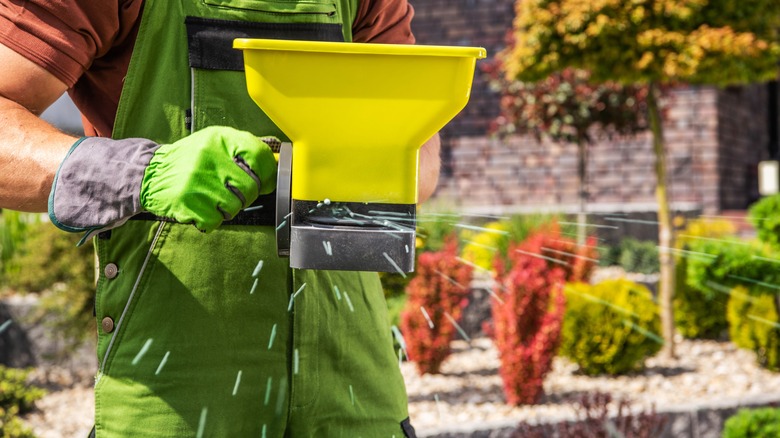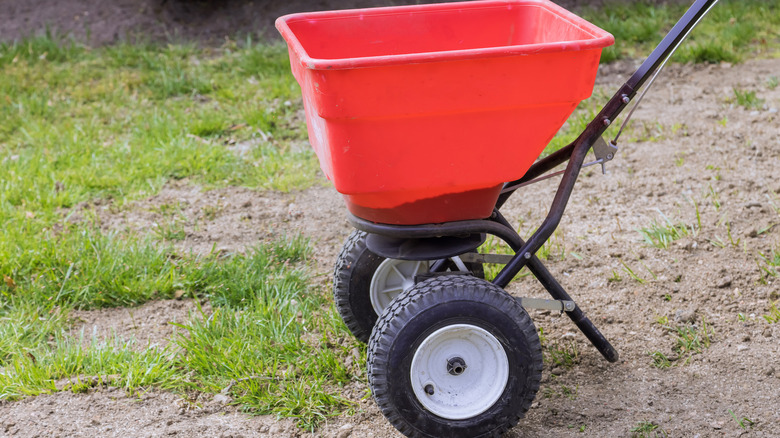Achieving your dreamy green expanse goes beyond regular watering and mowing — adequate fertilization plays a key role too. While determining the right amount of fertilizer and time to enrich your lawn’s soil is important, ensuring effective distribution is equally necessary. That’s where lawn spreaders come into the picture. Also known as fertilizer spreaders, these wheeled lawn tools ensure that every inch of your green carpet gets adequate nutrients, preventing the formation of bald patches. Moreover, they can be used to disperse ice melt during the winter, making them a multipurpose purchase.
But here’s the kicker: Not all lawn spreaders are created equal. Primarily categorized as broadcast and drop spreaders, with their handheld and walk-behind variants, your choice between the two will decide whether you get your enviable Eden or a lackluster lawn. While broadcast spreaders are more suited to bigger lawns as they distribute fertilizers quickly, drop spreaders are more precise, making them ideal for smaller areas. However, the ultimate selection will depend on your lawn’s size and terrain, the spreader’s capacity, and your own time availability and budget.
When to use a broadcast spreader

Alternatively called rotary spreaders, broadcast spreaders uniformly scatter fertilizers in a wide, fan-like pattern, effectively covering a broad expanse of your yard in a short while. Being capable of firing granules in all directions, they ensure wider coverage than drop spreaders, making them a suitable choice for medium to large-sized yards. Moreover, rotary spreaders offer more capacity, minimizing the number of refills. Also, some variants offer side shields that enable easy application around the lawn’s perimeter by shutting down a part of the spreader.
However, rotary spreaders do not offer precise application, which makes it harder to control their application around driveways, flower beds, paths, roads, and any tight spots. Additionally, a broadcast spreader’s effective range is 75% of the total length of its arc. As a result, they distribute fewer fertilizers at the lower end of their broadcast range, necessitating overlapping passes.
But for those insistent on using broadcast spreaders to maneuver around small, shaded sections, handheld rotary spreaders are an option. Their small hoppers enable easy spreading in tight spots and along borders. Besides, their battery-operated variants work well on slopes as they require less power vis-à-vis their walk-behind counterparts.
When a drop spreader is more suitable

Drop spreaders are an ideal choice if you want to control your fertilizer application precisely. Usually wheel-mounted, these spreaders directly disperse the nutrients on the green carpet, lowering the impact of any wind action and minimizing wastage. Moreover, their controlled granular application makes them easy to operate around obstacles, irregular terrain, and walking pathways. As accuracy takes precedence over time, these are better suited to small lawns measuring under 5,000 square feet.
While easy to navigate, drop seeders offer a lower fertilizer spread than rotary spreaders, necessitating multiple passes. Not only is this time-consuming, but it also raises the possibility of over-dumping fertilizer, which may lead to a striped effect across the area. However, you can sort this issue out by gathering excessive fertilizer and widely spreading the remaining amount using a broom. While all spreaders are pretty comparable in terms of price, if you’re really worried about breaking the bank and don’t have much lawn space, maybe invest in a hand spreader first.



